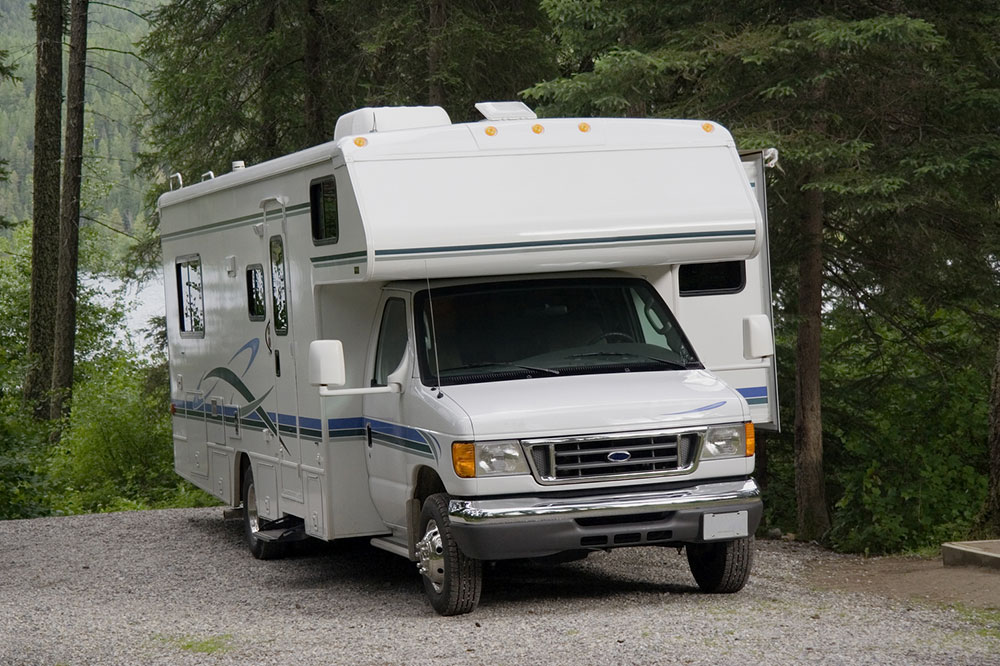Things to Consider While Planning a Road Trip in a Motorhome

Exploring the roads of US is a dream—with beautiful landscapes, the highways of the Pacific coast, the rocky canyon flanked terrain, beaches, national parks and more, imagine if you can experience from your home placed in a place that is middle of nowhere with just the sun and the spectacular natural scenery to accompany you. With travel and leisure industry growing, road trips are catching up rapidly with the current generation. The American roads undoubtedly induce a sense of romance to young travelers. It can be made more fun and exciting by having an own vehicle at our disposal. So, having all amenities of a home while traveling with us sounds great right? Recreational Vehicles (RV), Caravans, campervans or RV motorhomes as they are called, are the answer! These provide the most efficient, quick, fun and a flexible option to do a road-trip or a cross-country trip. The basic cost of travel includes transportation, accommodation, food, and leisure with shopping and other activities. By traveling in an RV camper, transportation and accommodations will be sorted in one rig with having to pay only for the fuel charges. Nightly charges apply if one is hired. This reduces the overall expense of the vacation by over 50%. And if there is a kitchen in the vehicle, further the costs can be saved by cooking own food which is safer and reliable than eating on the roads. Fret not if you cannot afford to own one, there are several options for hiring an RV motorhome is a cheaper solution and on the bucket list for millions of travelers across the globe. Since most of the rental companies offer campervans with unlimited miles and generator usage, the entire cost-effectiveness depends on the usage pattern. Campervans provide cost-effectiveness, fun, and convenience of travel especially if traveling as a group or with family. Hitting the open highways and byways in the USA is more like a dream come true experience for most people.
While hiring an RV camper is considered as a cheaper option, several factors may determine the actual costs.
Along with the size of RV motorhome, the costs also depend on below two factors:
Seasonality of the rental rate
This determines whether the rates are flexible depending on the travel season or a daily/weekly re-determined type based on the supply and demand, i.e., the availability of the RVs
Optional extras selected
Prices are set based on the extra add-on features chosen by the customer. It can either be the number of options on the varieties chosen.
One will be spoilt for choices while choosing an RV. These RV motorhomes come in several classes, brands, and styles and priced accordingly. One can choose whatever best suits the family/group’s preference based on budget and traveling style.
The different classes of RV motorhomes are as follows
Class A / Luxury Motorhomes
These RVs come equipped with all the amenities that are required for a luxury road-trip. These expensive vehicles are large and spacious enough to accommodate up to 12 people are integrated with a kitchen, bathroom equipped with shower, bedrooms and much storage space.
Class B/Budget Motorhomes
These are semi-integrated RVs and for travelers who choose cost efficiency with a small compromise on the luxurious amenities. These vehicles have raised roofs and a chassis of a van and are equipped with all the basic comforts of a shower and toilet. Since the excess storage spaces are removed, these vehicles are smaller and hence are fuel efficient and safer to drive. It is possible to hire an RV motorhome for as less as $100 per night.
Class C/Best Motorhomes
With all the comforts eliminated and a basic cot or just a bed replacing to sleep and slide-outs placed on a truck/van chassis, without a kitchen are the characteristics of this class. This is a value for money option for people seeking pocket-friendly and bound on experiencing travel in the raw form.
With driving around on a road trip, it becomes essential to keep in mind the American road rules as they can vary in every state. Here is an overview of what to keep in mind while traveling across each state in the country:
- The National Highway System of USA includes a network of main roads, highways and interstate freeways. This may be confusing with road numbers, varying speed limits, the direction of the road, mile markers, etc.
- With each state having its freeways, there may be individual state numberings with black and white shields, and markers like state flags, state shape and circular shields for identification.
- Driving is on the right-hand side of the road.
- Know about each state rules related to uncontrolled intersections, all-way stops, traffic lights and indications.
- Picking up people from the side of the road or hitch-hiking is considered illegal in some states.
- Keep an eye on the road markings (yellow and white) and 4-way stop signs. The first vehicle to stop gets the right of way. Regulatory signs, speed limit signs, warning signs, navigational signs are something to be aware of before hitting the roads.
- Don’t speed and show patience. Try and invest in a navigation system or a GPS—it is worth it.
- Every state has its type of licensing and interstate travel and border permits for the RV motorhomes.
- The speed limits are different in each state.
- Don’t drink and drive, don’t use cell-phones while driving and always wear seat belts which are governed by individual state laws.
- Some states have toll roads (also called turnpikes) which have different payment options like cash or E-payment using E-ZPass which needs to be confirmed with the rental company beforehand.



